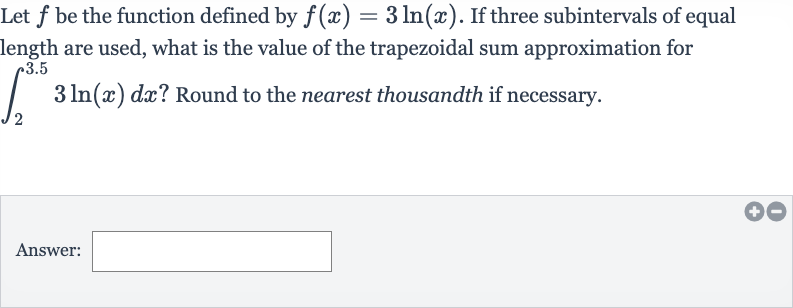Full solution
Q. Let be the function defined by . If three subintervals of equal length are used, what is the value of the trapezoidal sum approximation for ? Round to the nearest thousandth if necessary.Answer:
- Rephrase Problem: Let's first rephrase the "What is the trapezoidal sum approximation for the integral of from to using three subintervals of equal length?"
- Divide Interval: To use the trapezoidal rule, we need to divide the interval into three equal subintervals. The length of each subinterval is .
- Evaluate Function: The endpoints of the subintervals are , , , and . We will evaluate the function at these points.
- Apply Trapezoidal Rule: Calculate the function values: , , , and .
- Substitute Values: Now, we apply the trapezoidal rule, which is given by the formula:,where is the length of each subinterval.
- Perform Calculations: Substitute the values into the trapezoidal rule formula:.
- Calculate Sum: Perform the calculations:.
- Add Values: Use a calculator to find the numerical values of the logarithms and perform the multiplication:.
- Multiply for Approximation: Calculate the sum:.
- Round to Nearest Thousandth: Add the values together:.
- Round to Nearest Thousandth: Add the values together:.Multiply by to get the final approximation:.
- Round to Nearest Thousandth: Add the values together:.Multiply by to get the final approximation:.Round to the nearest thousandth:.

